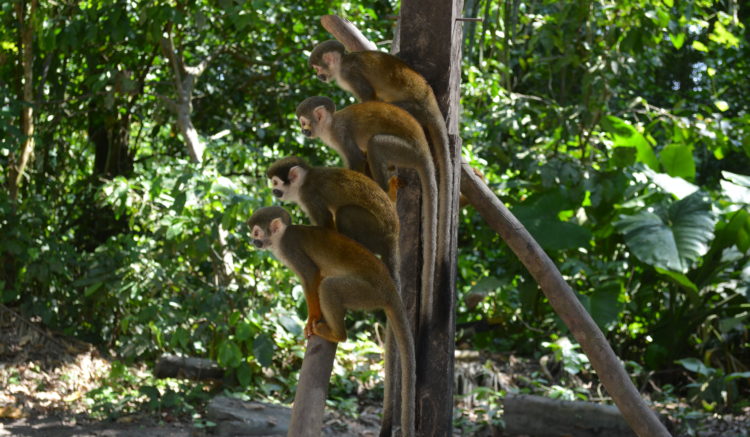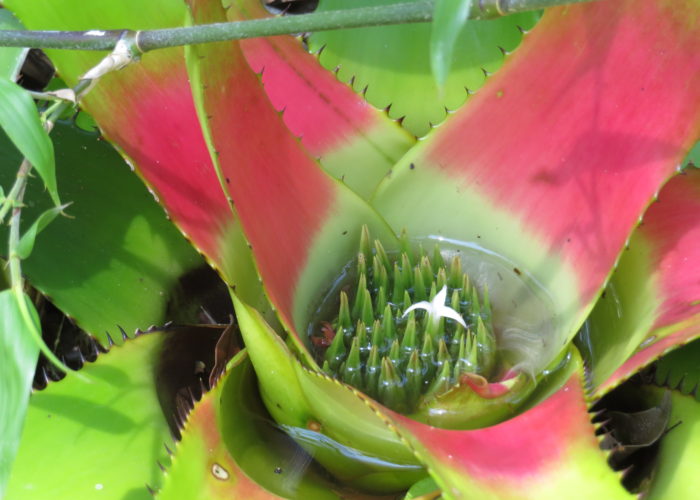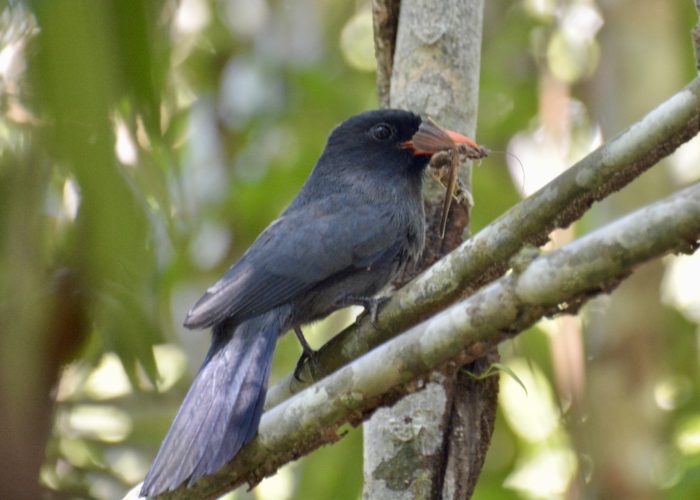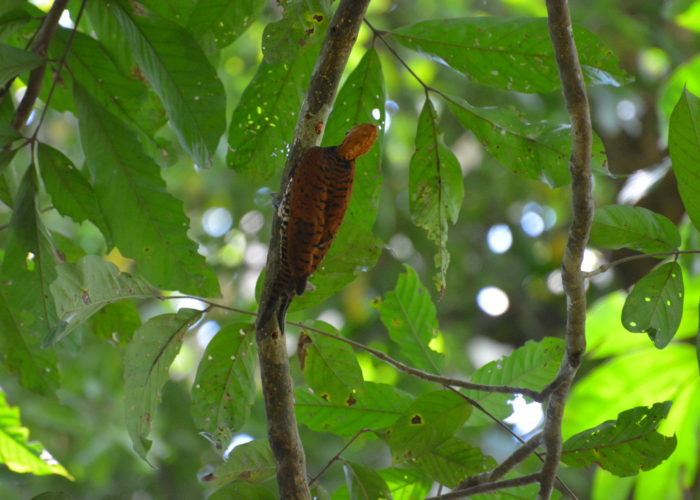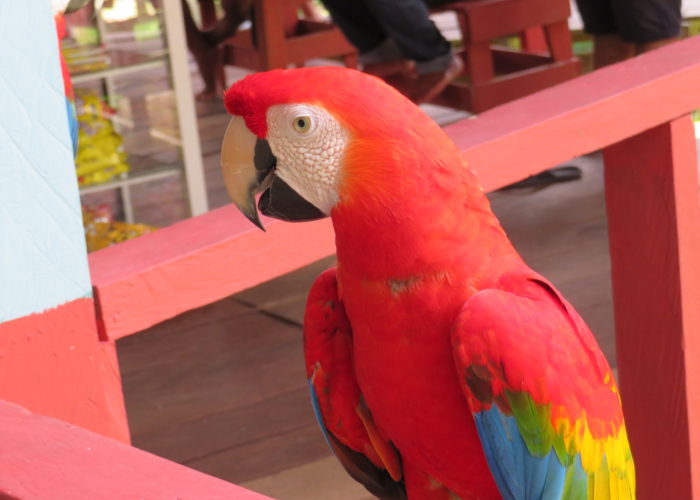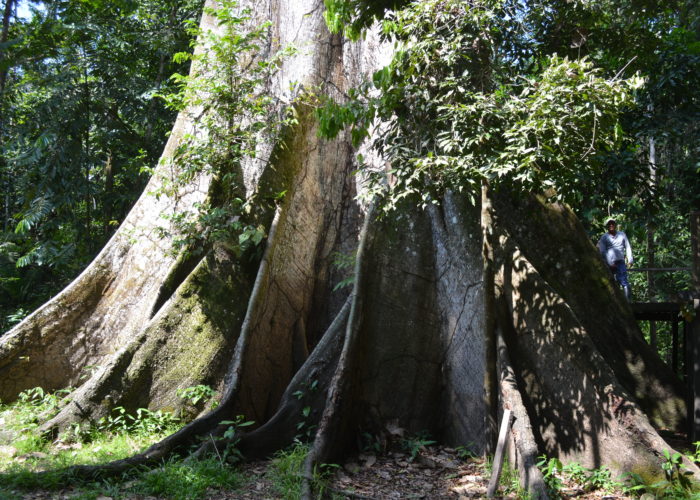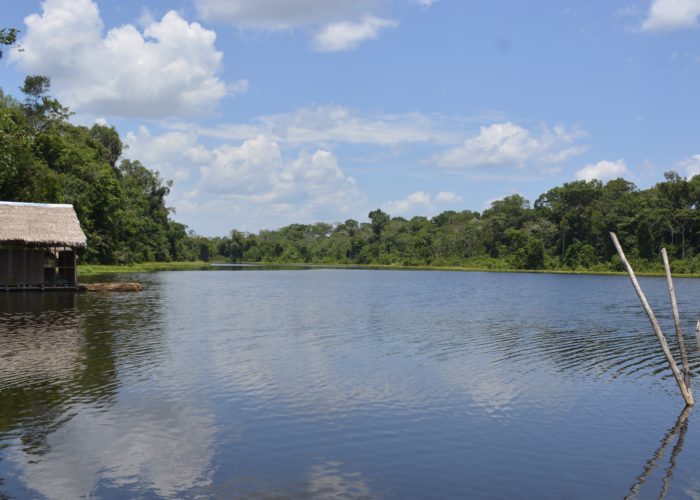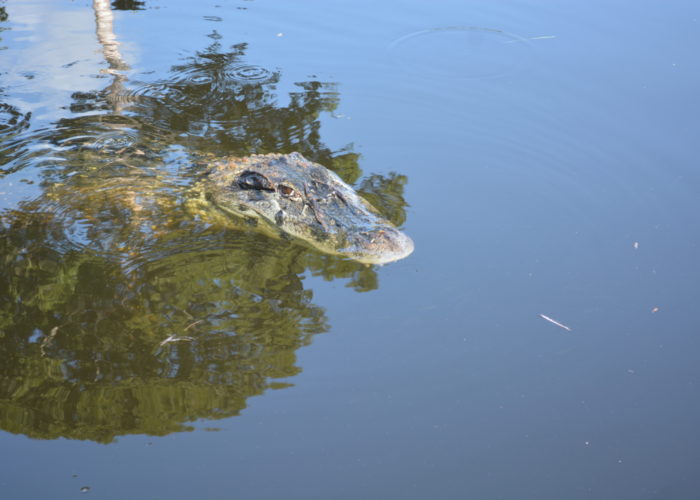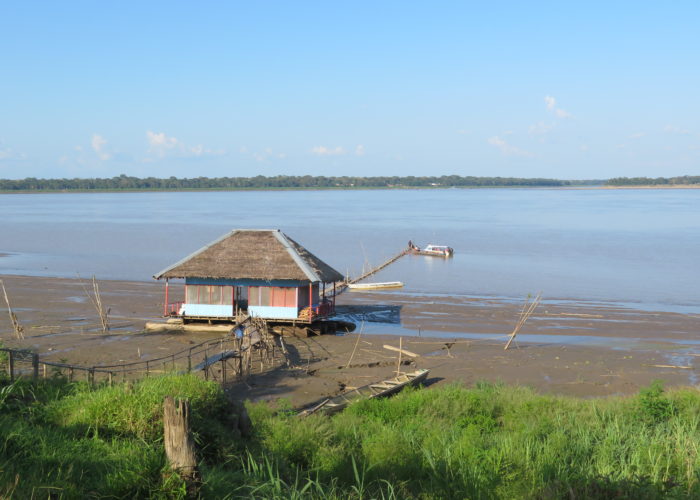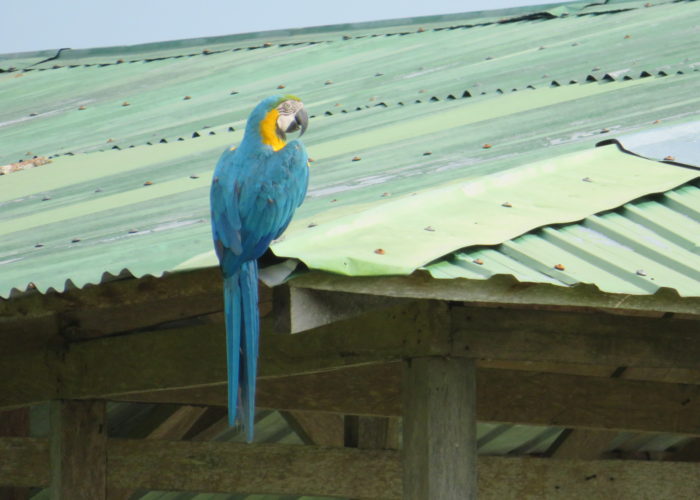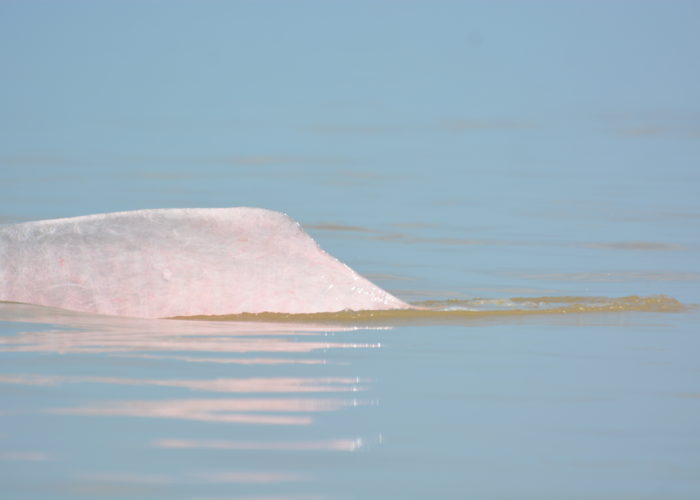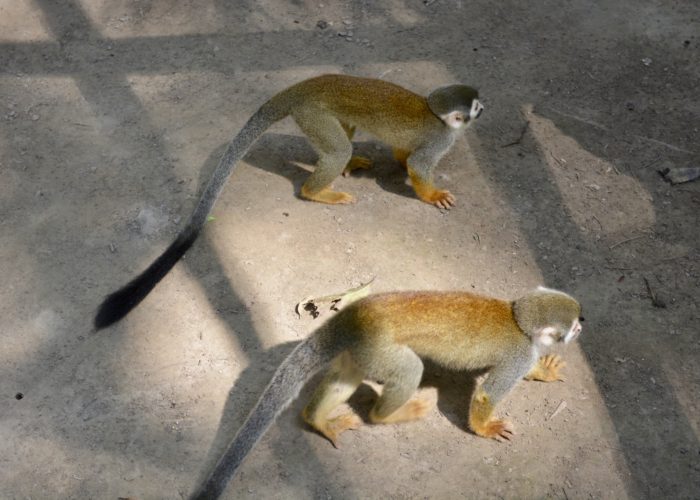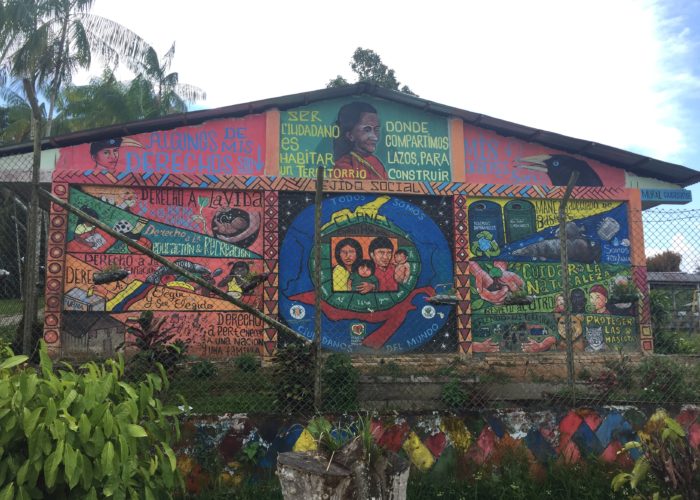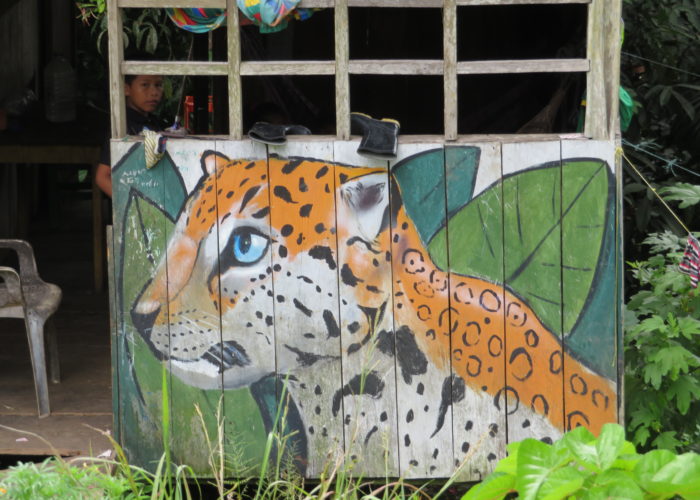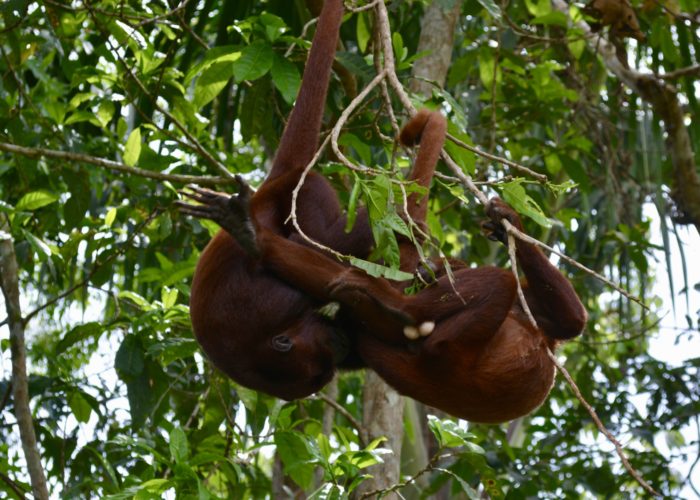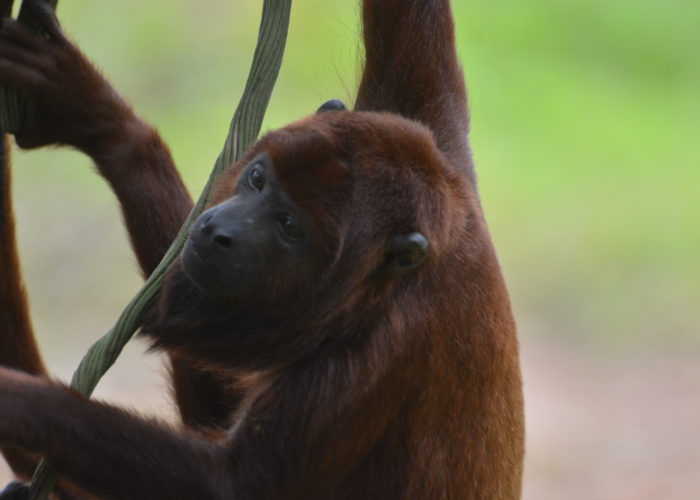Our first experience of the Amazon was in the remote Colombian port of Leticia on a small part of Colombia that extends down to the Amazon River. The only way of reaching Leticia from Colombia is by plane, the alternative is via river boat from either Brazil or Peru. Leticia is the principal economic hub of the upper middle part of the Amazon and is a key staging post between Iquitos further upstream in Peru and Manaus downstream in Brazil. There are no roads other than in the town and all commercial traffic flows on the river, or comes in by air, so Leticia is very much separate from the rest of Colombia.

The centre of Leticia is Parque de Santander, which come dusk is literally invaded by thousands of green parakeets coming to roost after a day searching for food in the jungle. The parakeets all congregate in the tall trees in the square and surrounding gardens for safety from their natural predators like snakes that do not reside in the town. The noise they make is enormous, as is the guano droppings, but that does not put off many of the locals congregating in the early evening.
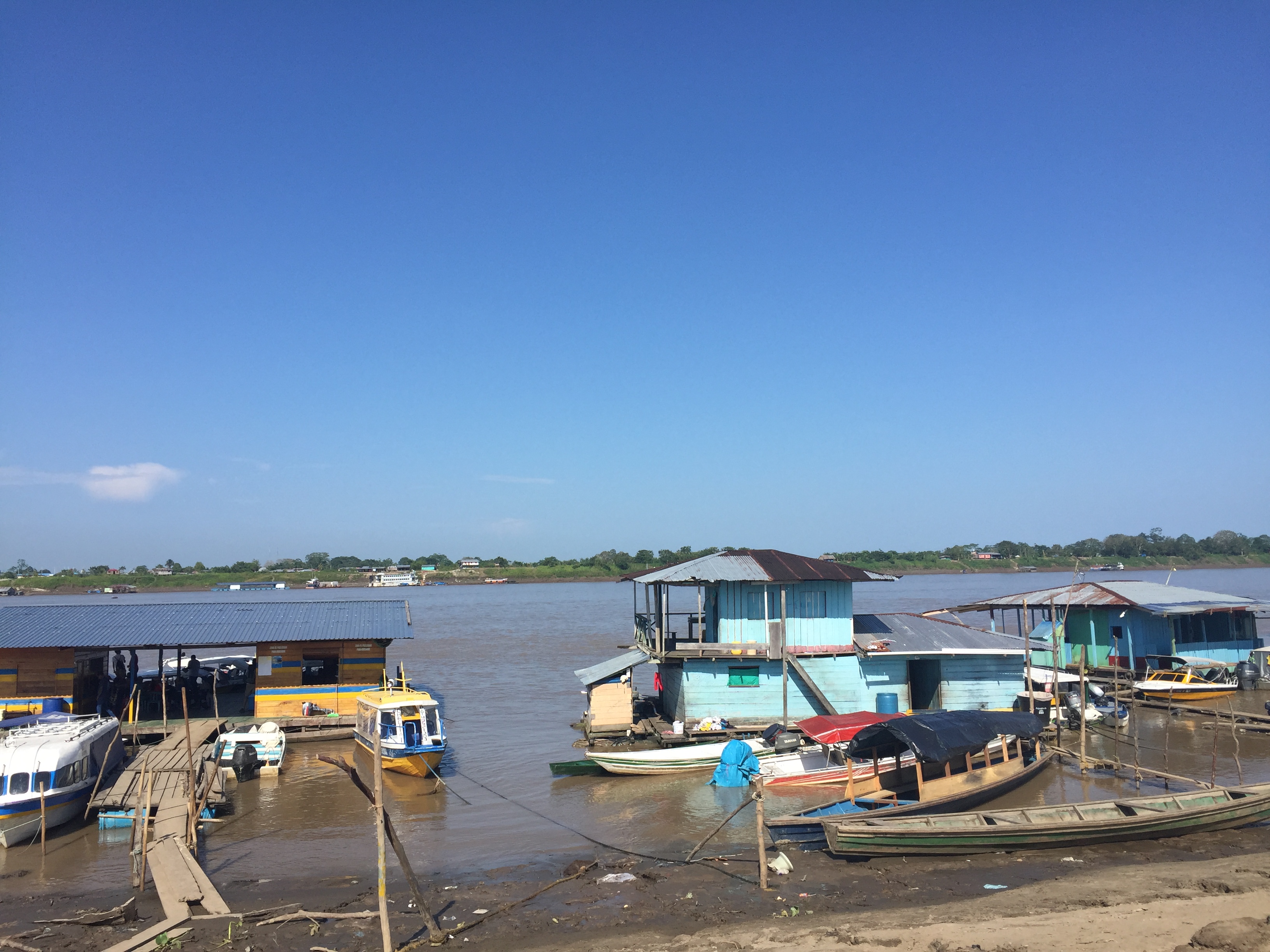
Leticia is well placed to do day or one or two night trips in the Amazon jungle. Unlike Manaus the jungle is right next door as there is very limited human inhabitation in the surrounding area. The community in the three countries is, apart from football , where many wear the yellow of Colombia or Brazil or the red and white of Peru, really a single community and the border very much an artificial man made construct that does not get in the way of the day to day business of the population. People can move freely in between all the countries and it is only when they venture deeper into them that they have to complete border formalities.

We visited in September and at that time of the year the Amazon is relatively low – there is a range of 14 metres between seasons, and as a result many of the banks extend down to the river side and the houses sit on stilts raised from the ground and not water. The main river front of Leticia is across a narrow creek and some marshland to the main river, where the boats moor up. In the wet season the boats moor up much closer to town.
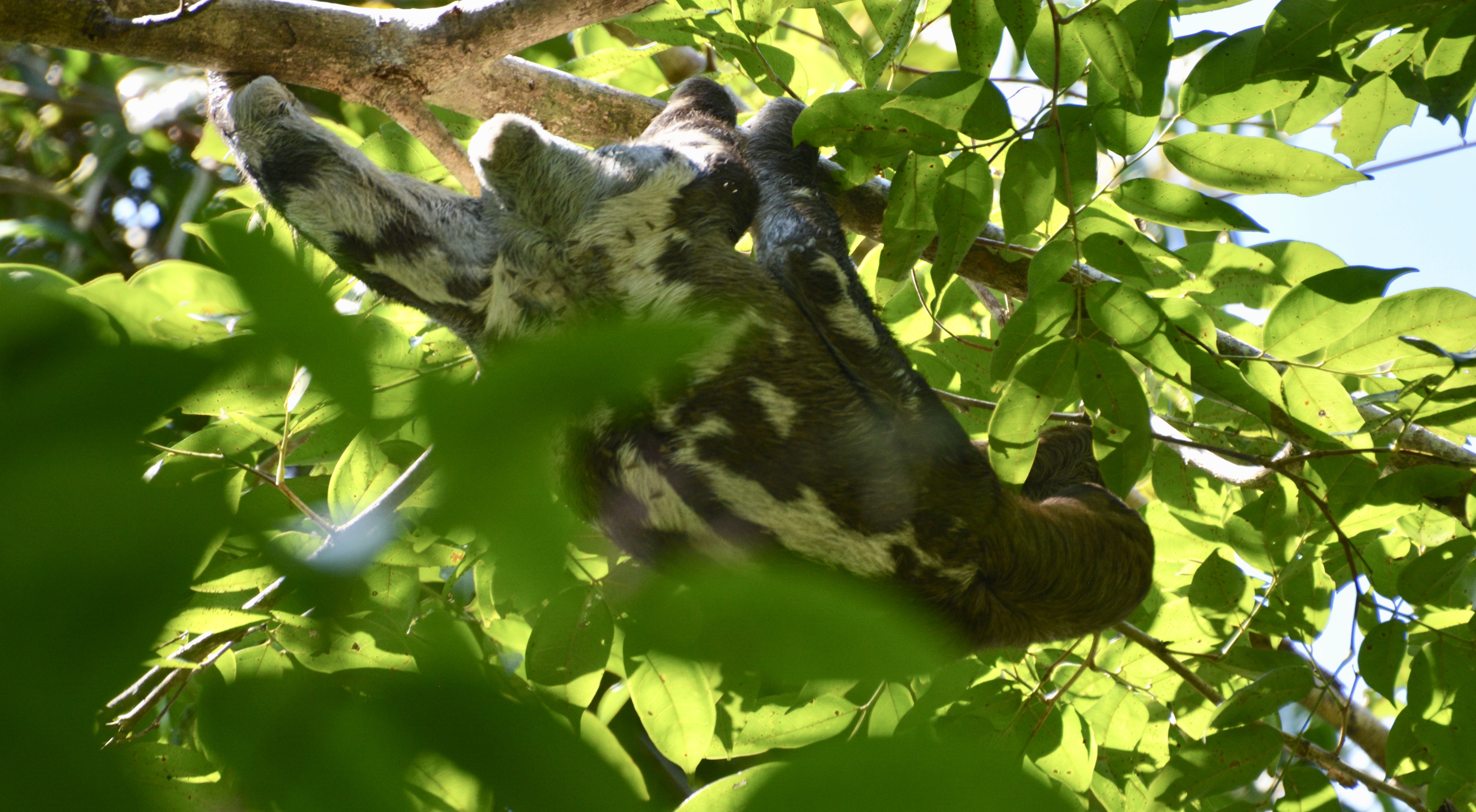
We took a couple of river trips, the first we went upstream and crossed over into Peru for a small jungle walk and a visit to a picturesque lake a couple of kilometres from the river bank. The trail took you past a wide variety of trees, insects, frogs and birds, as well as some monkeys and a sloth. The habitat is very varied with many different shades of green and some of the trees were nearly 100 metres tall. The lake contained two species of piranha, some large caimans and the enormous pirarucú fish which is one of the largest fresh water fish in the world.

Our second trip took us much further upstream and on the speedboat ride up stream several times we saw both the pink and the grey river dolphins. These mammals are similar to their marine cousins and have the same movements in and out of the water, together with the permanent smile that graces all dolphins. The local Ticuna people are very protective over the dolphins as they believe in the after life some will return as dolphins. Also there are stories of dolphins being the father of illegitimate children, which adds to their protection.
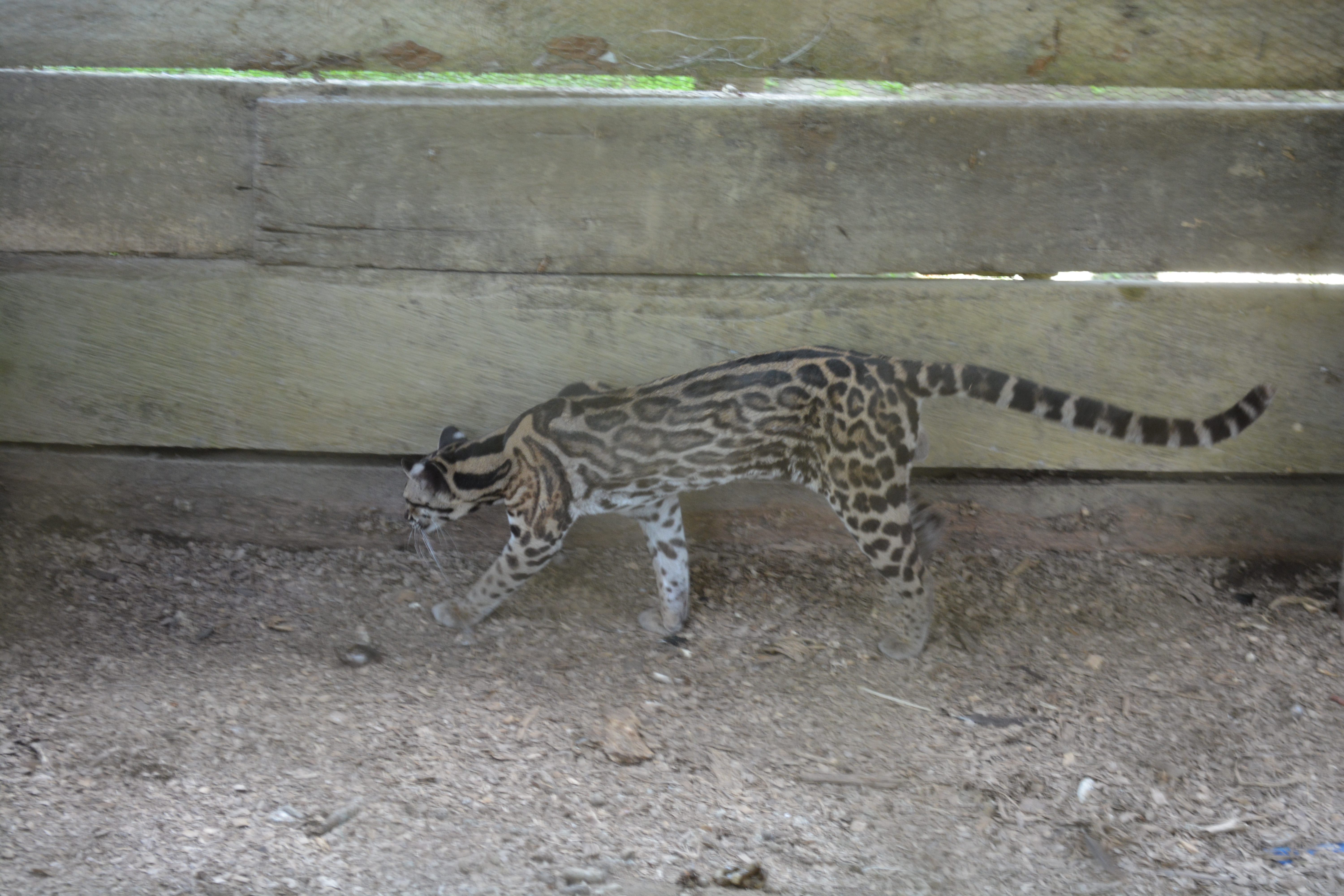
Further upstream on the Peruvian side is a small hamlet of Puerto Alegria, where they keep a small number of Amazonian animals as a small zoo, the Colombian authorities do not permit wild animals to be kept in activity. Included in the animals kept were some orphaned baby sloths, a small caiman as well as a orphaned baby jaguar and an anaconda. It all felt a little bit distasteful and one can help but believe that the Colombian authorities have the right policy.
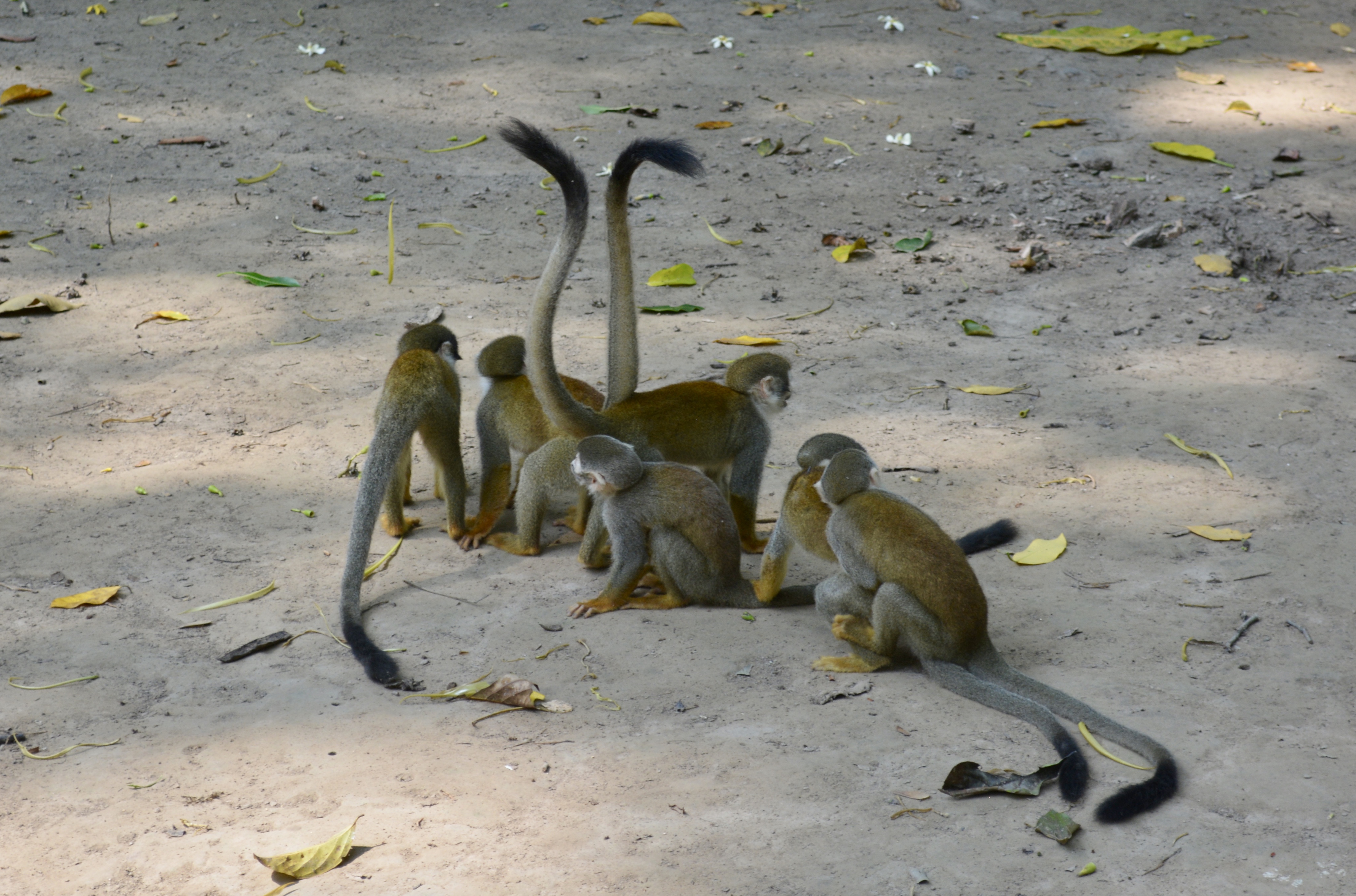
Carrying upstream on the Colombian side was monkey island where there is an enormous colony on monkeys, that are not totally wild but are provided with food so they congregate near the small community. The monkeys like all monkeys the world over are curious and playful and will jump on anyone or anything near by. Finally the other major settlement in the Colombian Amazon is the small community of Puerto Nariño which is a very tidy and clean town with no motor vehicles other than the dustcart. Again this is a pleasant place to start some small jungle walks.

While Leticia is not the cleanest of Colombian towns, in that there is a lot of litter and plastic reminiscent of the Pan American Highway in Northern Peru, it makes for an excellent base to explore the Amazon from a relatively safe compact town with all the facilities such communities offer.
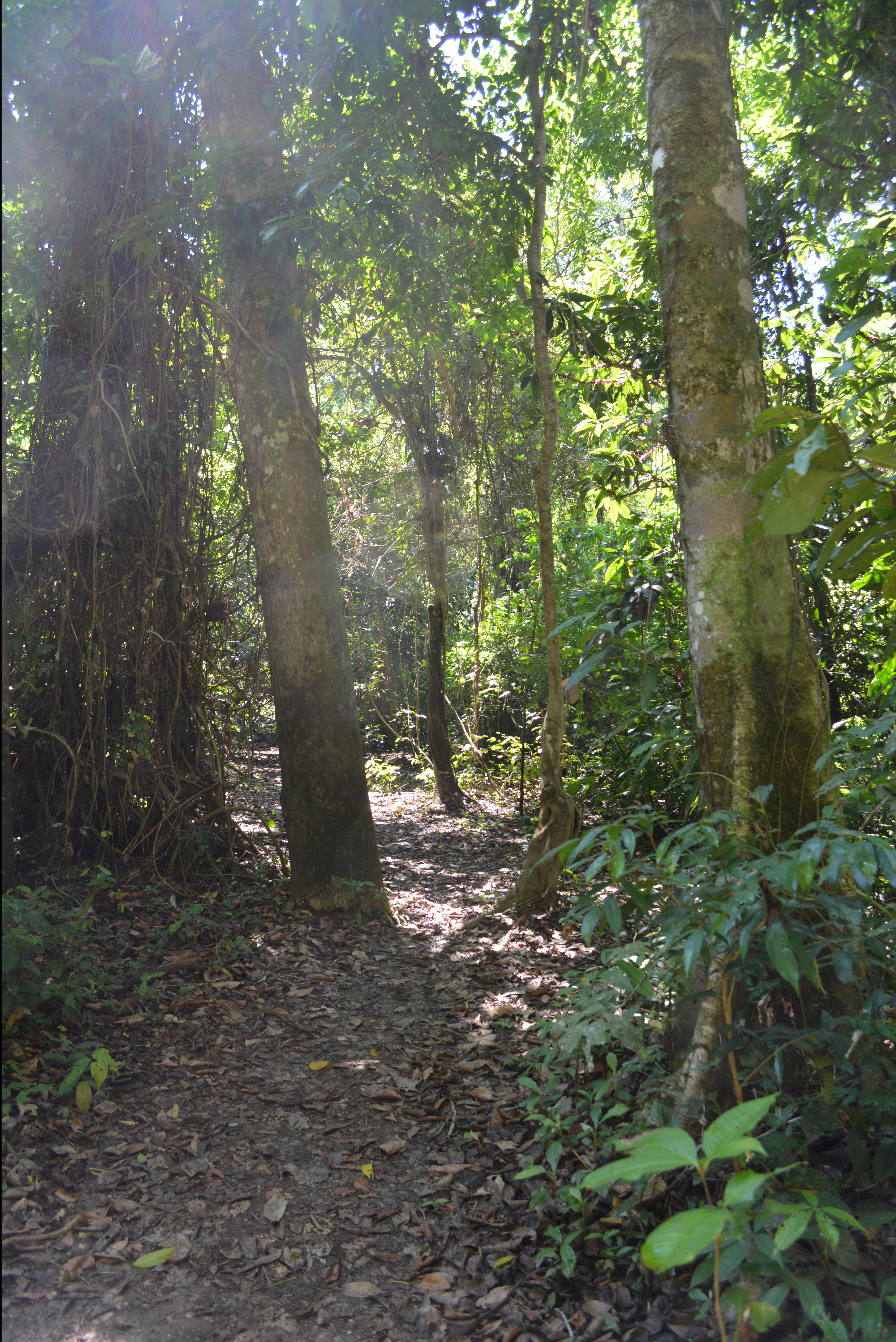
Crossing finally over into Brazil involves obtaining a Colombian exit stamp at Leticia Airport, crossing over to Tabitinga and obtaining a Brazilian entry stamp at the offices of the Federal Police. Again while sounding complicated, the whole process including the taxi from the hotel to Leticia Airport, then across the border to the Federal Police Station in Tabitinga and then onto Tabitinga Airport took just over half an hour.
Date: 18/09/2018 to 22/09/2018
